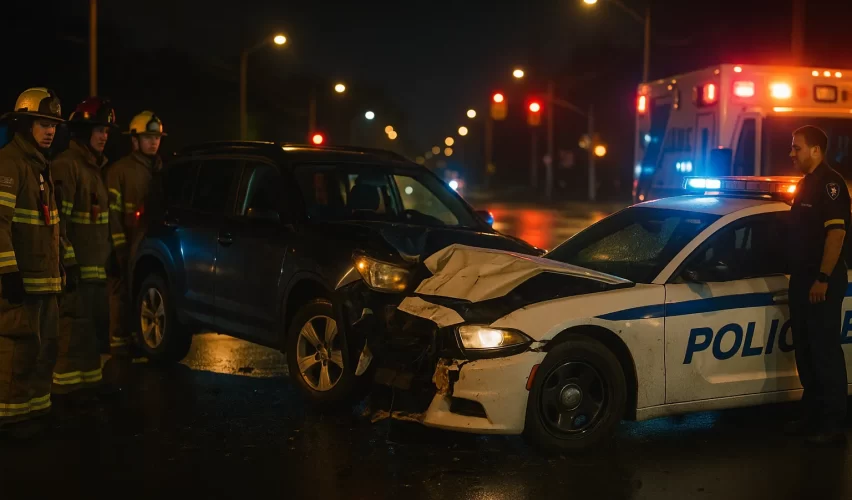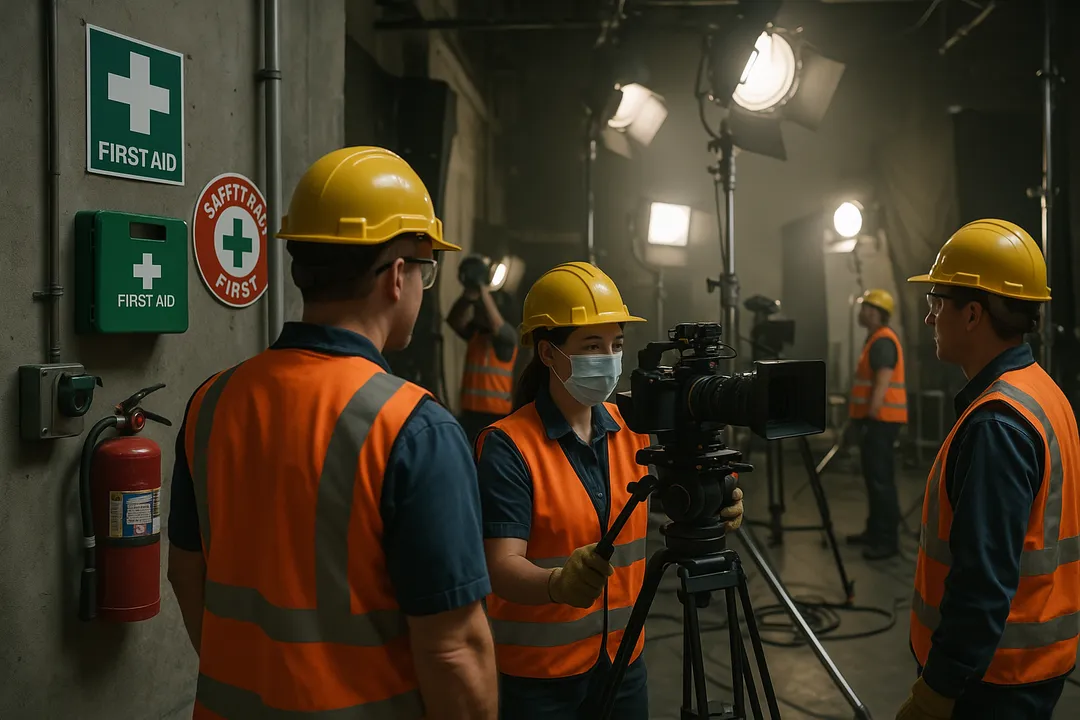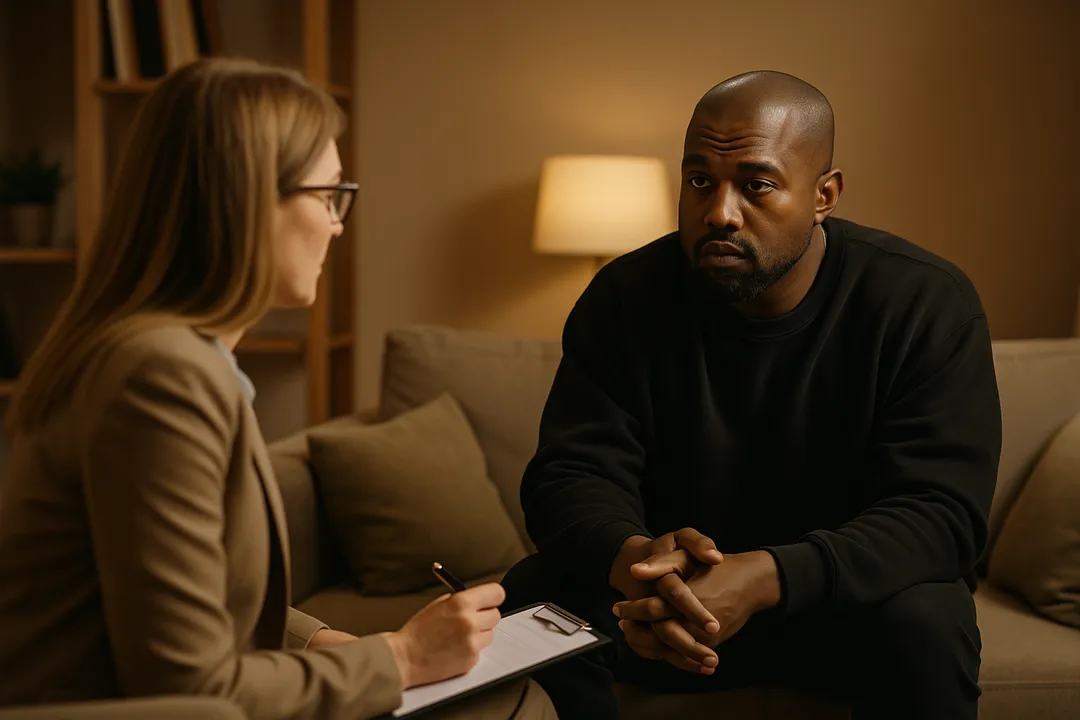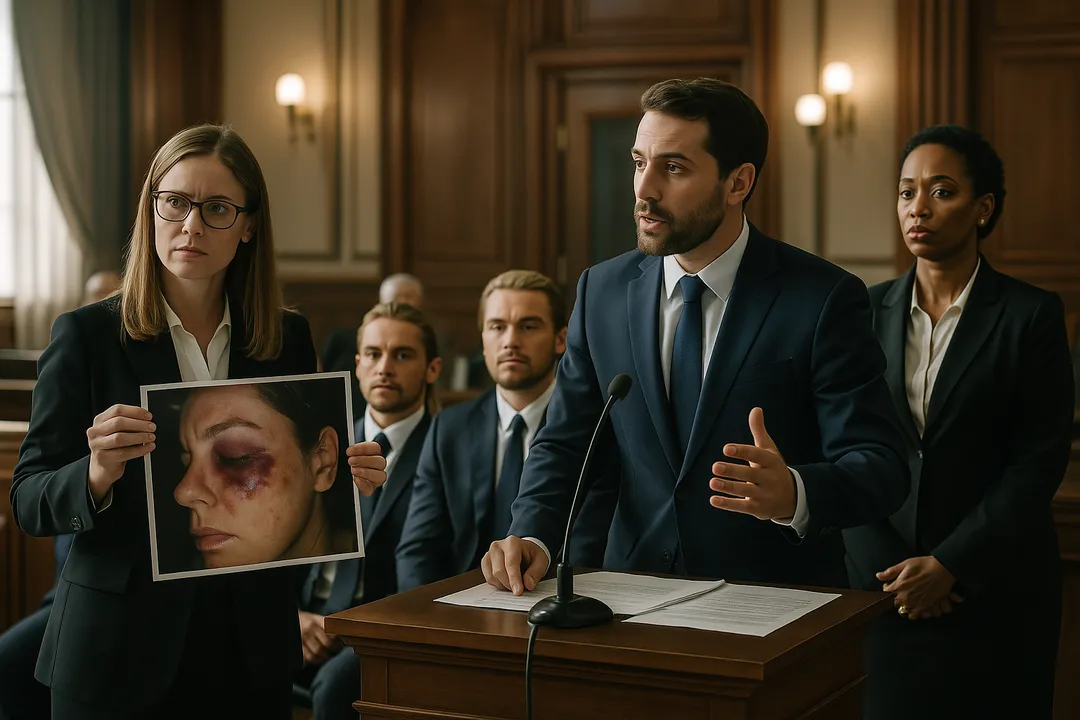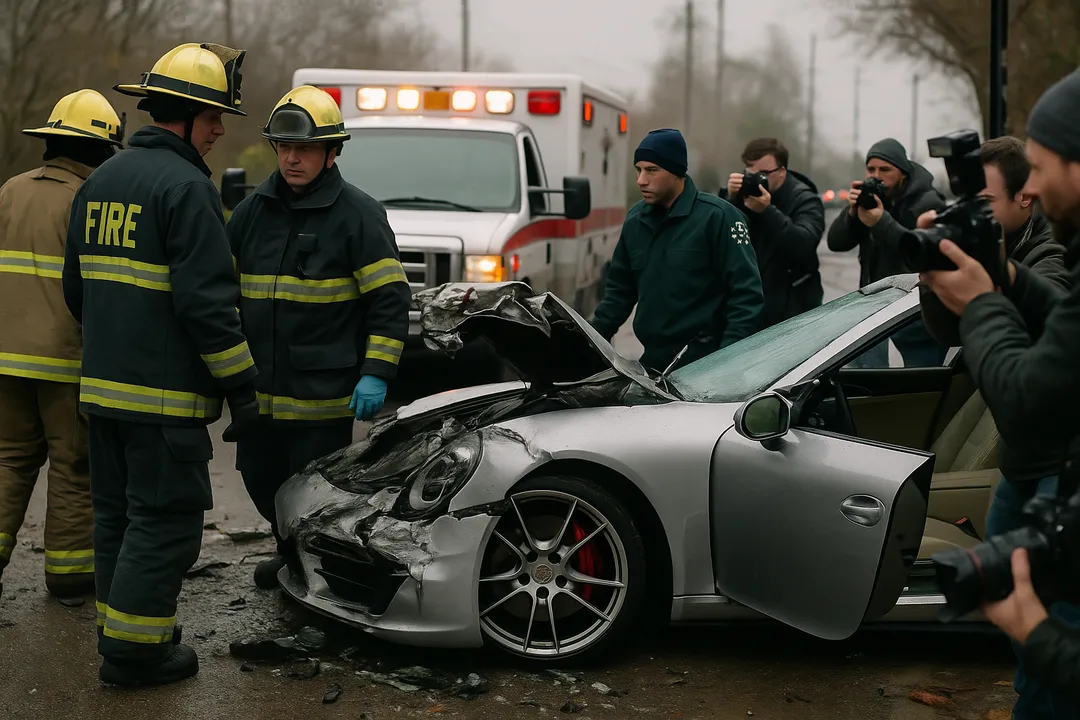Hollywood actor Josh Hartnett’s recent hospitalization following a collision between his SUV and a Royal Newfoundland Constabulary patrol vehicle has brought renewed attention to the unique safety challenges and legal complexities facing celebrities working on international film productions. The 47-year-old “Oppenheimer” and “Pearl Harbor” star was rushed to a Canadian hospital after the accident occurred in St. John’s, Newfoundland, around 1 a.m. on September 25, 2024, while he was in town filming a Netflix production.
The incident, which is currently under active investigation by Canadian authorities, highlights the complex intersection of celebrity safety, international production liability, and the unique risks that actors face when working far from their home base. While Hartnett was reportedly treated for minor injuries and has since returned to work, the accident raises important questions about duty of care, insurance coverage, and legal responsibility when celebrities are injured during international productions.
This case represents more than just another celebrity car accident—it illuminates the evolving landscape of celebrity safety in an increasingly globalized entertainment industry where productions frequently cross international borders in pursuit of tax incentives, diverse locations, and cost savings. As we explored in our comprehensive analysis of celebrity car crashes and legal consequences, the legal implications of such incidents extend far beyond immediate medical concerns to encompass complex questions of jurisdiction, liability, and insurance coverage.
The Incident: Late Night Collision in St. John’s
According to reports from the Canadian Broadcasting Corporation and multiple entertainment news outlets, Josh Hartnett was a passenger in an SUV that collided with a Royal Newfoundland Constabulary patrol vehicle in the early morning hours of September 25, 2024. The accident occurred in St. John’s, the capital city of Newfoundland and Labrador, where Hartnett was filming an undisclosed Netflix production.
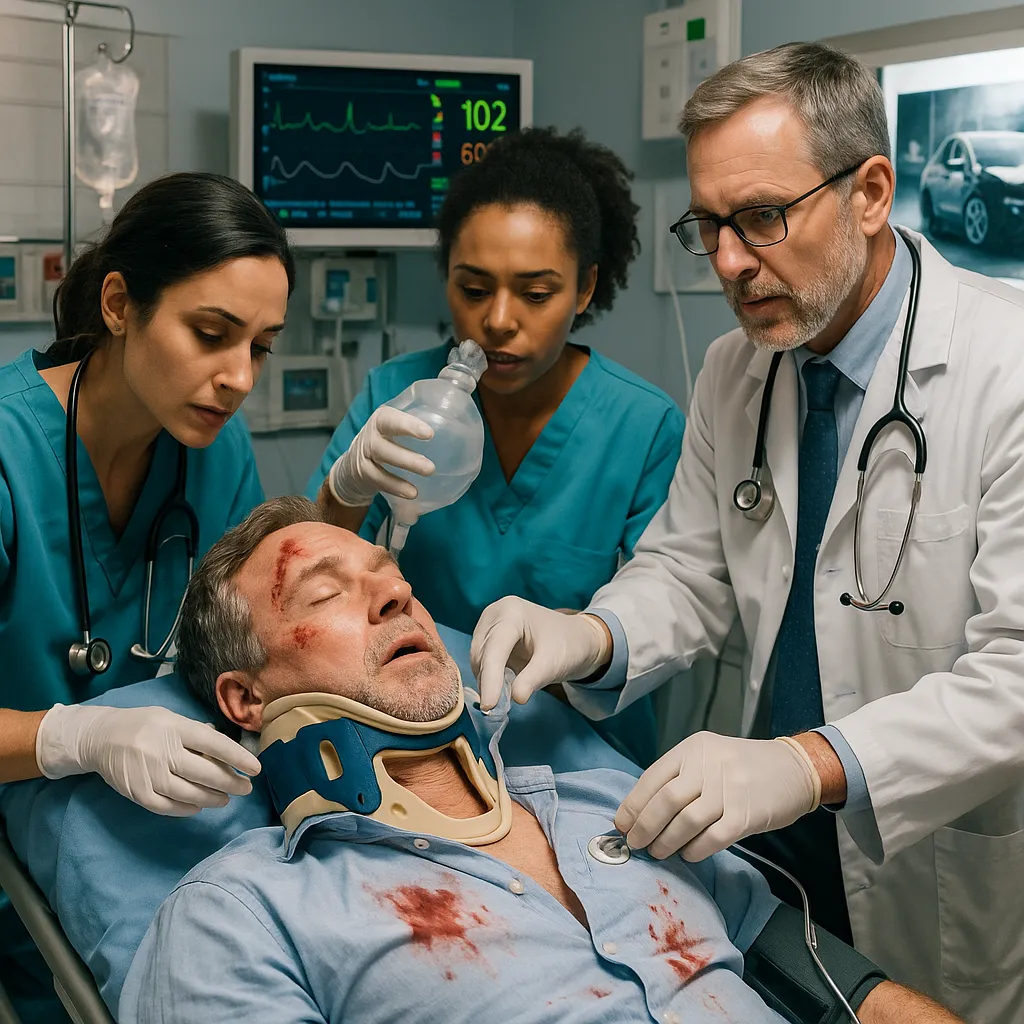
The collision reportedly caused significant damage to both vehicles, though specific details about the circumstances leading to the accident have not been publicly released pending the ongoing investigation. What is known is that Hartnett was transported to a local hospital for treatment of what were described as minor injuries, and he was subsequently released after receiving medical care.
The timing of the accident—occurring at 1 a.m.—raises questions about the circumstances surrounding Hartnett’s travel at that hour. Whether he was returning from filming, traveling to a location, or engaged in personal activities could have significant implications for insurance coverage and liability determinations. The involvement of a police patrol vehicle adds another layer of complexity to the incident, as it may affect how fault is determined and what legal protections or complications arise from the collision.
The fact that Hartnett has reportedly returned to work on the Netflix production suggests that his injuries were indeed minor and that the production was able to continue without significant disruption. However, the incident serves as a reminder of the unpredictable risks that celebrities face when working in unfamiliar locations, particularly during international productions where local traffic patterns, road conditions, and emergency response capabilities may differ from what they’re accustomed to.
Legal Implications of International Celebrity Accidents
The legal ramifications of Hartnett’s accident are particularly complex due to the international nature of the incident and the involvement of a police vehicle. When celebrities are injured during international productions, questions of jurisdiction, applicable law, and legal responsibility become significantly more complicated than domestic incidents.
Under Canadian law, the determination of fault in vehicle accidents involving police vehicles follows specific protocols that may differ from those in the United States or other jurisdictions. The Royal Newfoundland Constabulary’s involvement in the accident means that the investigation will likely be conducted according to Canadian standards and procedures, which could affect how liability is determined and what legal remedies are available.
The international production context adds another layer of legal complexity. Netflix, as the production company, likely has specific insurance policies and legal protections in place for international filming, but the extent of these protections and how they apply to off-set accidents involving cast members can vary significantly. The question of whether Hartnett was engaged in work-related activities at the time of the accident could be crucial in determining what insurance coverage applies and what legal protections are available.
As detailed in our analysis of celebrity lawsuit trends in injury cases, the entertainment industry has seen an evolution in how international celebrity injury cases are handled, with increasing emphasis on comprehensive insurance coverage and clear protocols for cross-border incidents.
The involvement of a police vehicle also raises questions about governmental immunity and the specific legal protections that may apply to law enforcement agencies in Canada. These factors could significantly affect any potential legal proceedings and the remedies available to Hartnett if he chooses to pursue legal action related to the accident.
International Production Safety Standards
The entertainment industry’s increasing reliance on international locations for film and television production has created new challenges for ensuring celebrity safety and managing legal liability across different jurisdictions. Hartnett’s accident highlights the need for comprehensive safety protocols that account for the unique risks of filming in foreign countries.
International productions must navigate varying safety standards, traffic laws, emergency response capabilities, and legal frameworks that can differ significantly from the production company’s home country. Netflix and other major streaming platforms have invested heavily in international content production, but this expansion has also created new liability exposures and safety challenges that require careful management.
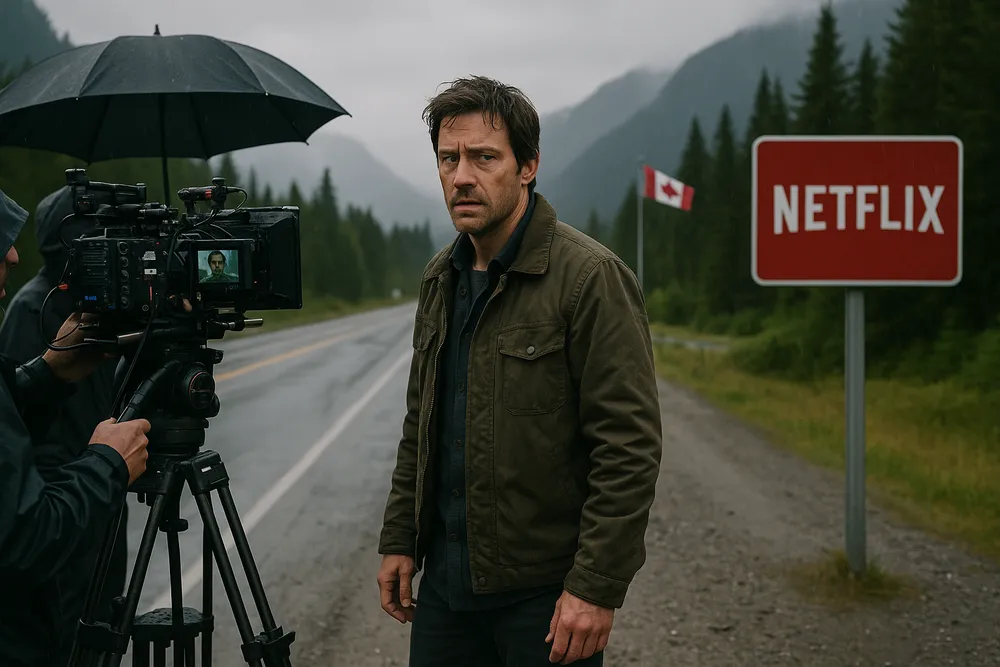
The specific safety protocols for celebrity transportation during international productions can vary widely depending on the location, the nature of the production, and the specific contractual arrangements between the production company and the talent. Some productions provide dedicated transportation services for principal cast members, while others may rely on local transportation options or allow celebrities to make their own arrangements.
The timing of Hartnett’s accident—occurring in the early morning hours—also raises questions about the adequacy of safety protocols for celebrity travel during off-hours. International productions often involve long shooting days and irregular schedules that can increase the risks associated with celebrity transportation, particularly in unfamiliar locations.
Industry safety standards for international productions typically include provisions for emergency medical care, evacuation procedures, and communication protocols, but the specific implementation of these standards can vary significantly depending on the location and the production company’s policies.
Insurance and Financial Implications
The insurance implications of Hartnett’s accident are complex and multifaceted, involving potential coverage from multiple sources including production insurance, personal celebrity insurance, and Canadian governmental insurance systems. The international nature of the incident creates additional complications regarding which insurance policies apply and how claims are processed.
Production insurance for international filming typically includes coverage for cast injuries, but the specific terms and conditions can vary significantly depending on whether the injury occurs on-set, during work-related travel, or during personal activities. The determination of whether Hartnett’s accident occurred during work-related activities could be crucial in determining what production insurance coverage applies.
Celebrity personal insurance policies often include provisions for accidents that occur during professional activities, but these policies may have limitations or exclusions for certain types of activities or locations. The specific terms of Hartnett’s personal insurance coverage and how they interact with production insurance could significantly affect the financial implications of the accident.
The involvement of a Canadian police vehicle may also trigger coverage under Canadian governmental insurance systems, which could provide additional compensation or create complications regarding primary coverage responsibilities. The interaction between multiple insurance systems across international borders can create complex coverage disputes that require specialized legal expertise to resolve.
The financial impact of celebrity accidents during international productions extends beyond immediate medical costs to include potential production delays, additional security measures, and long-term health monitoring. For a major Netflix production, even minor delays can result in significant additional costs that may be covered by production insurance depending on the specific circumstances of the accident.
The Role of Celebrity Transportation Safety
Hartnett’s accident brings attention to the critical importance of transportation safety for celebrities working on international productions. The entertainment industry has developed increasingly sophisticated approaches to celebrity transportation, but the implementation of these safety measures can vary significantly depending on the location and the specific production circumstances.
Celebrity transportation safety protocols typically include provisions for professional drivers, secure vehicles, route planning, and emergency communication systems. However, the effectiveness of these measures can be compromised when productions are filming in unfamiliar locations with different traffic patterns, road conditions, and emergency response capabilities.
The specific circumstances of Hartnett’s accident—occurring at 1 a.m. in St. John’s—highlight the challenges of ensuring celebrity safety during off-hours and in locations where local emergency response capabilities may be limited. International productions must balance the need for celebrity safety with practical considerations such as cost, logistics, and local regulations.
The involvement of a police vehicle in the accident also raises questions about the interaction between celebrity transportation and local law enforcement. While police vehicles are typically operated by trained professionals, they may also be engaged in emergency response activities that can increase the risk of accidents.
Industry best practices for celebrity transportation safety include regular vehicle maintenance, driver training and screening, route planning and security assessments, and comprehensive emergency response protocols. However, the implementation of these practices can be challenging during international productions where local resources and capabilities may be limited.
Medical Response and Emergency Protocols
The adequacy of medical response and emergency protocols for celebrity injuries during international productions is a critical factor in ensuring both immediate safety and long-term legal protection. Hartnett’s case demonstrates the importance of having comprehensive emergency response capabilities in place when filming in international locations.
The fact that Hartnett was quickly transported to a local hospital and received appropriate medical care suggests that adequate emergency response protocols were in place for the Netflix production. However, the quality and availability of medical care can vary significantly depending on the filming location, and productions must carefully assess local medical capabilities when planning international shoots.
Emergency response protocols for international productions typically include provisions for immediate medical care, medical evacuation if necessary, communication with family and representatives, and coordination with local authorities. The effectiveness of these protocols can be crucial in minimizing the impact of accidents and ensuring that celebrities receive appropriate care.
The international nature of Hartnett’s accident also raises questions about medical record keeping, follow-up care, and coordination between Canadian and American medical systems. These factors can be important for both immediate treatment and long-term health monitoring, as well as for any potential legal proceedings related to the accident.
Celebrity medical emergencies during international productions can also create complications regarding medical decision-making authority, particularly if the celebrity is incapacitated and family members or representatives are not immediately available. Productions must have clear protocols in place for handling these situations and ensuring that appropriate medical decisions can be made quickly.
Comparative Analysis with Other Celebrity Vehicle Accidents
Hartnett’s accident is part of a broader pattern of celebrity vehicle accidents that have highlighted the unique risks and legal challenges facing high-profile individuals in the entertainment industry. As documented in our analysis of the impact of social media on celebrity injury news coverage, celebrity accidents have become increasingly visible and legally significant.
Previous cases involving celebrity vehicle accidents have established important legal precedents regarding liability, insurance coverage, and damage calculations. The outcomes of these cases often influence how similar situations are handled and what preventive measures are implemented by production companies and celebrity representatives.
The international nature of Hartnett’s accident creates additional complications that distinguish it from domestic celebrity vehicle accidents. Different jurisdictions have varying approaches to liability determination, insurance requirements, and damage calculations that can significantly affect the legal and financial outcomes of celebrity accidents.
The involvement of a police vehicle in Hartnett’s accident also creates unique legal considerations that may not apply to typical celebrity vehicle accidents. The specific legal protections and liability limitations that apply to law enforcement agencies can vary significantly between jurisdictions and may affect the available legal remedies.
Industry Response and Safety Improvements
The entertainment industry’s response to celebrity accidents like Hartnett’s often involves implementing new safety protocols, enhancing insurance coverage, and developing better risk management strategies for international productions. The specific lessons learned from this incident may influence how future international productions approach celebrity safety and transportation.
Industry organizations and production companies have increasingly focused on developing comprehensive safety standards for international filming, but the implementation of these standards can be challenging given the diverse locations and varying local capabilities involved in global production. Hartnett’s accident may serve as a catalyst for enhanced safety protocols specifically addressing celebrity transportation during international productions.
The insurance industry has also responded to the increasing risks associated with international celebrity productions by developing more sophisticated coverage options and risk assessment tools. The specific circumstances of Hartnett’s accident may influence how insurance companies approach coverage for celebrity transportation and off-set activities during international productions.
Production companies like Netflix have invested heavily in safety infrastructure and protocols for international filming, but incidents like Hartnett’s accident demonstrate that even comprehensive safety measures cannot eliminate all risks. The industry’s response to such incidents often involves continuous improvement of safety protocols and risk management strategies.
The Broader Context of Celebrity Safety
Hartnett’s accident occurs within a broader context of increasing attention to celebrity safety and the unique risks faced by high-profile individuals in the entertainment industry. As explored in our analysis of mental health injuries and celebrity recovery, the entertainment industry has become increasingly aware of the various types of risks that can affect celebrity health and safety.
The globalization of entertainment production has created new categories of risk that require specialized management and legal expertise. Celebrity safety during international productions involves not only physical safety considerations but also legal, financial, and reputational risks that can have long-term implications for both the celebrities and the production companies involved.
The increasing visibility of celebrity accidents through social media and entertainment news coverage has also created additional pressures for production companies to demonstrate comprehensive safety measures and appropriate response protocols. The public scrutiny that accompanies celebrity accidents can have significant reputational and financial implications that extend beyond the immediate legal and medical consequences.
Long-term Implications for International Productions
The outcome of any legal proceedings or insurance claims related to Hartnett’s accident will likely influence how the entertainment industry approaches celebrity safety during international productions. The specific legal precedents established and the financial consequences experienced may affect future production planning and risk management strategies.
The increasing frequency of international productions and the associated safety challenges may lead to the development of new industry standards and regulatory frameworks specifically addressing celebrity safety during cross-border filming. International cooperation between entertainment industry organizations and regulatory agencies may be necessary to develop effective safety standards that can be implemented across different jurisdictions.
The insurance implications of Hartnett’s accident may also influence how production companies structure their coverage for international filming and how insurance companies assess and price the risks associated with celebrity participation in international productions.
Conclusion
Josh Hartnett’s car accident in Canada while filming a Netflix production represents more than just another celebrity mishap—it’s a case study in the complex challenges facing the modern entertainment industry as production becomes increasingly globalized and the risks associated with celebrity safety become more diverse and complicated.
The incident highlights the critical importance of comprehensive safety protocols, adequate insurance coverage, and clear legal frameworks for managing celebrity safety during international productions. The specific circumstances of Hartnett’s accident—involving a police vehicle in a foreign jurisdiction during off-hours—create unique legal and practical challenges that require specialized expertise and careful management.
For the entertainment industry, Hartnett’s accident serves as a reminder of the evolving risks associated with international production and the need for continuous improvement in safety protocols and risk management strategies. The legal, financial, and reputational implications of celebrity accidents during international productions require careful consideration and proactive management by production companies, talent representatives, and insurance providers.
The broader lessons from this incident extend beyond the entertainment industry to any organization that sends high-profile individuals to work in international locations. The balance between operational efficiency and safety considerations, the complexity of cross-border insurance and legal issues, and the importance of comprehensive emergency response protocols are relevant to many industries and organizations.
As the entertainment industry continues to expand its international footprint and celebrities increasingly work in diverse global locations, incidents like Hartnett’s accident will likely become more common. The industry’s response to these challenges—in terms of safety improvements, legal frameworks, and insurance innovations—will be crucial in ensuring that the benefits of international production can be realized while minimizing the risks to celebrity safety and production viability.
Explore additional resources on NBC News, People Magazine, Fox News, and E! Online.


